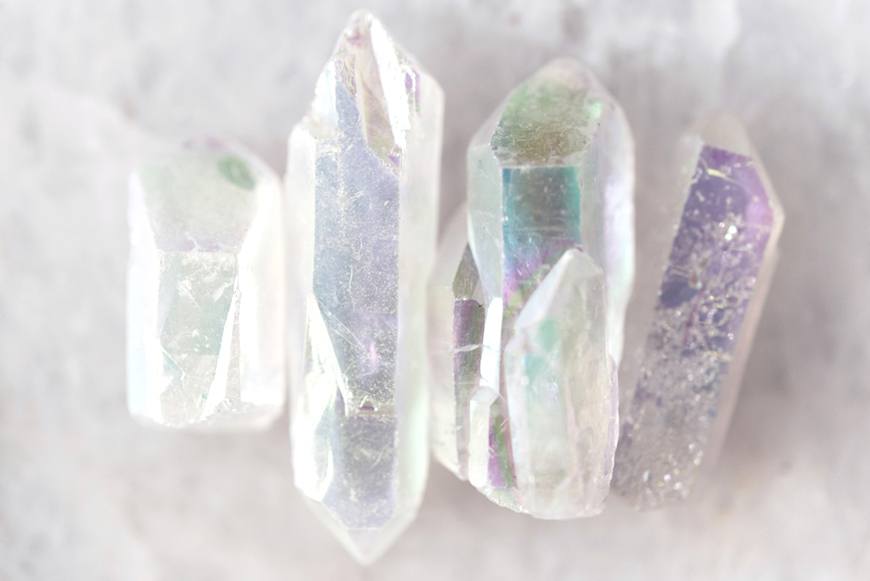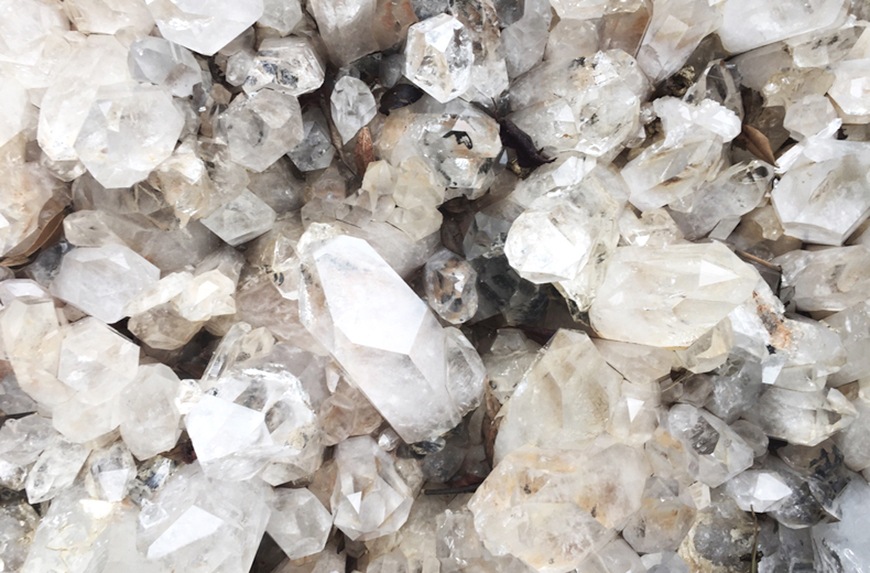Crystals are so ubiquitous here in Los Angeles that I'm beginning to feel like a gem hoarder—everywhere I go, it seems like someone hands me a small rose quartz or a similar stone infused with energy healing properties. When a piece I fancy doesn't find me in this way, I generally seek it out online via one-click ordering.
This doorstep delivery is awesome for busy enthusiasts, but it's definitely not as much fun as the OG method of crystal sourcing, AKA digging for buried treasure. Luckily, recreational gem mining is a thing, and though it's generally more of a diversion than it is a get-rich-quick scheme, a man in North Carolina did discover a 310-carat emerald as recently as 2009, while another lucky human found an 8.52-carat diamond while digging at a tourist-friendly site in Arkansas in 2015.
Chances of striking pay dirt on a dig are about as good as winning the lottery. Buy hey, even if all you manage to unearth are some new, high-vibe specimens for your mantle place, I'd still call that a jackpot.
Below, find 6 places you can indulge your crystal addiction, feel like an old-school explorer, and, maybe, make bank.

1. Emerald Hollow Mine, North Carolina
Emerald Hollow Mine is located in Hiddenite, North Carolina, which happens to be where the aforementioned lucky explorer found his 310-carat gem. His discovery was made on private property, but Emerald Hollow Mine offers the public a chance at striking similar luck with not only emeralds but also the hiddenite for which the area is known, as well as amethysts, sapphires, topaz, garnet, and more.

{{post.sponsorText}}
Here, you have three options for your search: sluicing, creeking, and digging. In the first scenario, you can sift through what's known as "salted" buckets of dirt, meaning you'll be assured to find crystals within them. Creeking is a slightly more adventurous angle without the guarantee of success—water brings minerals down from the mine and lands them in the shallow creek bed for relatively easy searching. The final option involves a hike to the mine and some real digging. Prices start at $10.
Once you've accumulated your treasure, there is a lapidary on property who can turn your from-the-Earth finds into supercharged jewelry.
2. Craters of Diamonds State Park, Arkansas
This is North America's only public diamond mine, built atop the world's eighth-largest diamond-bearing crater. It was here the 8.5-carat diamond was discovered, but the gem was only one of hundreds of notable jewels—white, brown, and yellow diamonds—found on the property over time. The largest, discovered in 1924, boasted 40-plus carats.
You can seek out your treasure in one of three ways here. The first, surface searching, is exactly what it sounds like—you'll walk up and down the plowed rows of a 37.5-acre field seeking out gems by sight. (This method works best after a rain.) The second involves actual digging, about six inches to a foot down into the soil, and sifting. The third, for experienced miners, involves digging deep holes and strategically sorting through the dirt. Diamond discoveries aren't guaranteed via any of the three methods, though you can see a listing of recent finds here. Entry fee is $10 per person.
3. Jade Cove, California
Unlike the first two locales on this list, Jade Cove—located in the Big Sur area of California—is not commercialized. On the contrary, there are actually a few barriers to entry here: The way down is steep and potentially dangerous; at times the signs pointing the way go missing (locals who want to deter amateur hunters are generally suspected); and there are some regulations which restrict gem recovery. Still, none of the above have stopped local jade purveyors and tourists alike from seeking out this rare gem.
Though some adventurers shore dive here to find jade, it's more commonly searched for by sight in the sand. This is best accomplished at the tideline, though treasure hunters are advised not to turn their back to the ocean as currents are strong. Jade can't always be identified by its color—here, it comes in shades of green, blue, red, black, and brown—but this crystal can be easily verified by its immunity to scratching.

4. Graves Mountain, Georgia
Graves Mountain was first mined in the 1920s by Tiffany & Co, which used the rutile it unearthed to polish diamonds. Now, this mineral-rich mountain is available for digs by appointment only for Georgia Mineral Society members; however, in April and October, Graves' caretaker is opening the grounds to the public for three-day "rock swap & digs." (Could you just die? There will be barbecue, too, and the whole shebang is organized by a man adorably named Junior.) Up-for-grabs gems include iridescent hematite, pyrite, blue quartz, quartz, and other crystals. Entry fee for the public event is by donation.
5. Cherokee Ruby & Sapphire Mine, North Carolina
According to the Cherokee Ruby & Sapphire Mine, a rare type of gem known as the pigeon-blood ruby can be found here. They're more valuable than your average stone—an extraordinarily large one sold at auction in 2015 for $33M—however, some believe this distinction should only belong to certain rubies of Burmese origin.
Regardless, many other crystals—good ol' regular rubies included—can be found here including sapphires, moonstone, quartz, smokey quartz, and more. "Digging" is done through buckets of soil (as opposed to a search into the actual earth). Unlike some crystal mines, however, Cherokee doesn't "salt" these treasure troves, meaning they don't throw in outside gems to sweeten the deal for consumers. The mine is closed from November to May. Fee is $25 per person.
6. Wegner Quartz Crystal Mine, Arkansas
This property is known for—you guessed it—quartz crystals. And while you won't see anything quite this extraordinary in size, clusters are sometimes unearthed here that weigh several tons, and gems are by all account abundant.
There are five options for unearthing stones at Wegner. The first involves searching a 40-acre surface mine by sight and hand tool. The second includes hitting up the sluicing trough, where you can sort through a pail of dirt for crystals including rubies, tourmalines, opals, amethysts, and others. The third option involves searching through a patch of dirt which has been brought down from the mine, and which is salted occasionally to replenish its crystal content. The fourth includes a dig at what's called the Phantom Mine, where you can find rare crystals-trapped-inside-of-another-crystal called Phantoms. Finally, the last option involves diamond hunting through a bag of dirt guaranteed to contain at least 1/2-carat's worth of diamonds. Fees start at $10.50 per person.
Once you've unearthed new treasures, here's how to cleanse them, where to put them in your home, and how (plus, why) to pair them with your plants.
Loading More Posts...